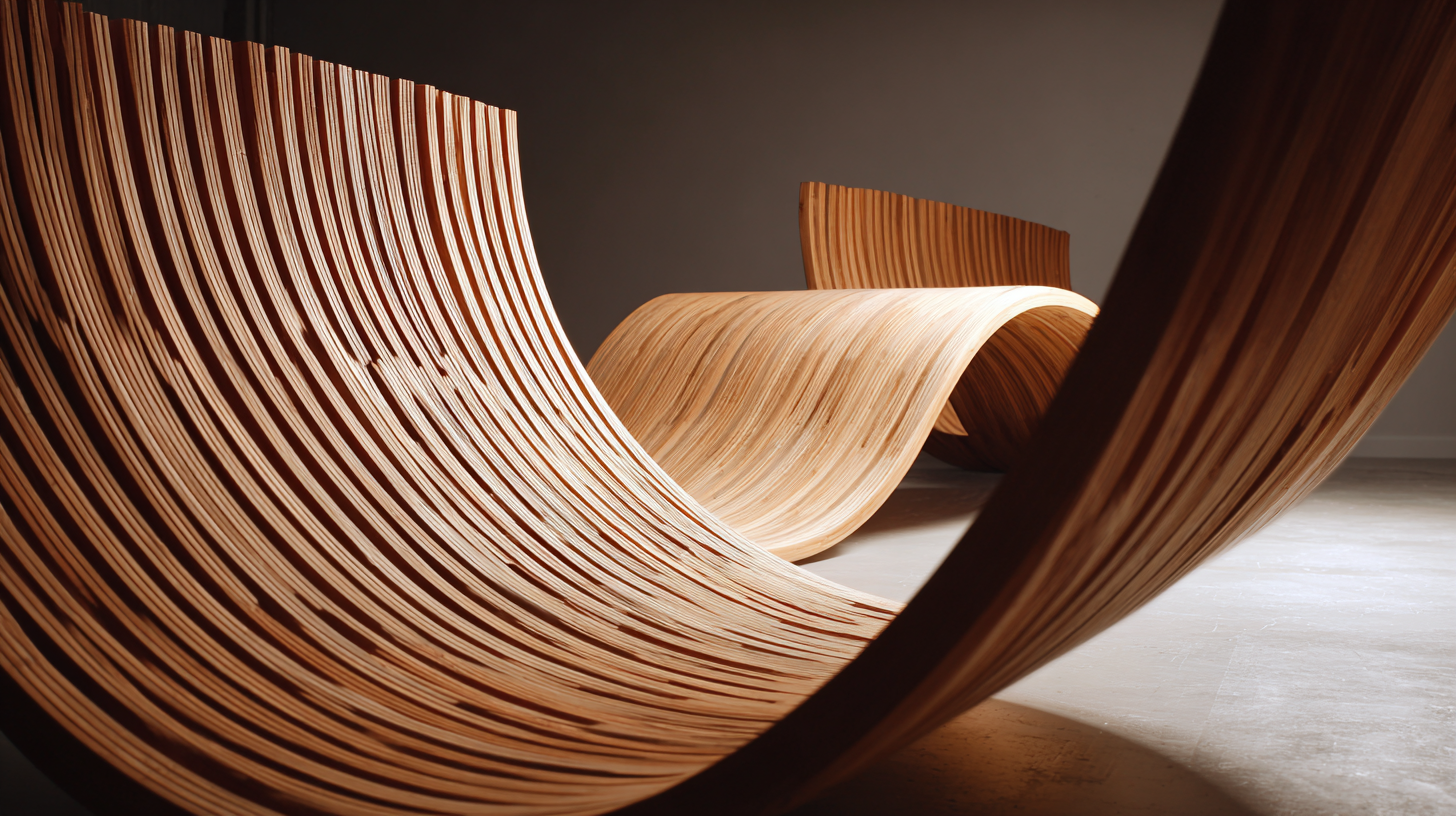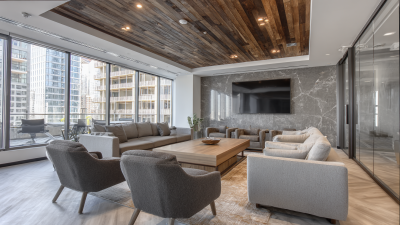The Art and Science Behind Curved Wooden Slats in Modern Furniture Design
 In the realm of modern furniture design, the integration of aesthetics and functionality has led to innovative approaches that captivate both designers and consumers alike. One such technique that is gaining popularity is the use of Curved Wooden Slats, which exemplify the harmonious blend of art and science in crafting contemporary pieces. These slats are not merely structural elements but also serve as visual statements, enhancing the overall appeal of furniture while providing ergonomic benefits.
In the realm of modern furniture design, the integration of aesthetics and functionality has led to innovative approaches that captivate both designers and consumers alike. One such technique that is gaining popularity is the use of Curved Wooden Slats, which exemplify the harmonious blend of art and science in crafting contemporary pieces. These slats are not merely structural elements but also serve as visual statements, enhancing the overall appeal of furniture while providing ergonomic benefits.
As we explore the intricate design philosophies and engineering principles behind Curved Wooden Slats, we will uncover essential tips for incorporating this element into your own furniture projects. Whether you are a seasoned designer or an enthusiastic DIYer, understanding the nuances of this design feature can elevate your work and create stunning pieces that stand the test of time.
Join us as we delve into the fascinating world of Curved Wooden Slats and discover how they can transform modern furniture design.
The Historical Evolution of Curved Wooden Slats in Furniture Design
The historical evolution of curved wooden slats in furniture design showcases a remarkable blend of innovation and artistry. Initially, ancient artisans utilized natural wood's flexibility, crafting bentwood furniture that emphasized both utility and aesthetic appeal. Cultures from the Egyptians to the Scandinavians recognized the potential of steam-bending techniques, allowing them to create elegantly curved forms that aligned with ergonomic needs.
As the Industrial Revolution advanced, furniture design began to embrace both handcrafted and mechanized processes. The early 20th century saw the rise of prominent designers like Alvar Aalto and Charles and Ray Eames, who championed the use of molded plywood. Their work highlighted the beauty of curves, transforming wooden slats into flowing lines that complemented modernist principles. This period marked a shift towards integrating functionality with sculptural forms, leading to iconic pieces that remain influential in contemporary design.
The Art and Science Behind Curved Wooden Slats in Modern Furniture Design
| Dimension | Measurement | Material Used | Design Influence |
|---|---|---|---|
| Height | 75 cm | Walnut Wood | Scandinavian Minimalism |
| Width | 60 cm | Ash Wood | Mid-Century Modern |
| Depth | 45 cm | Teak Wood | Organic Design |
| Curvature Radius | 20 cm | Maple Wood | Art Deco Revival |
| Finish Type | Matte | Beech Wood | Contemporary Style |
The Role of Ergonomics in the Use of Curved Wooden Slats
The increasing incorporation of curved wooden slats in modern furniture design signifies a robust alignment with ergonomic principles. Ergonomics, the science of designing furniture that fits the human body and its movements, has shown that well-designed seating can significantly reduce strain and enhance comfort. According to a report by the Human Factors and Ergonomics Society, ergonomic furniture can decrease the risk of musculoskeletal disorders by up to 40%. This correlation underscores the necessity of integrating ergonomic design into furniture development, particularly for public and work environments where prolonged sitting is common.
Curved wooden slats not only provide an aesthetic appeal but also serve a functional purpose by following the natural contours of the human body. A study published in the Journal of Furniture Science demonstrated that furniture with a curvature aligns better with the spine, thereby promoting better posture and reducing discomfort during use. The report highlighted that consumers often rate furniture with ergonomic features as more comfortable, which translates into higher customer satisfaction and loyalty. As furniture designers increasingly prioritize user experience, the role of curved wooden slats becomes more critical, merging artistry with scientific principles in creating functional and stylish pieces.
Sustainability Practices in Sourcing Curved Wooden Materials
The integration of curved wooden slats in modern furniture design not only enhances aesthetic appeal but also raises important questions about sustainability in sourcing materials. According to a report by the Forest Stewardship Council (FSC), sustainable forestry practices can lead to a reduction in annual tree harvesting rates by up to 30%, while ensuring the preservation of biodiversity. Utilizing curved wooden slats, designers are increasingly opting for responsibly sourced timber, which minimizes environmental impact while promoting forest regeneration.

Innovative Techniques in the Manufacturing of Curved Wooden Slats
The manufacturing of curved wooden slats has emerged as a pivotal innovation in the furniture design industry, combining artistry with advanced techniques that enhance both aesthetics and functionality. According to a report by the American Hardwood Export Council, the market for bent wood furniture continues to grow, with a projected increase of 5.2% annually through 2025. This trend is driven by growing consumer demand for unique and ergonomic furniture designs that offer both beauty and comfort.
Innovative techniques such as steam bending and CNC machining have transformed the production process of curved wooden slats. Steam bending allows manufacturers to manipulate wood into intricate shapes without sacrificing structural integrity, resulting in more sustainable and visually appealing products. Additionally, the integration of Computer Numerical Control (CNC) technology enables precise cuts and repetitive designs, drastically improving efficiency and reducing waste. As noted in the latest Furniture Today market analysis, the use of such technologies can decrease production costs by up to 20%, making curved wooden slats not only a stylish choice but also an economically viable one for manufacturers looking to meet the growing demands of the modern consumer market.
Market Trends: Consumer Preferences for Curved Slat Furniture Designs
In recent years, consumer preferences in furniture design have notably shifted towards the use of curved wooden slats, reflecting a blend of aesthetics and functionality. This trend is driven by a growing appreciation for organic shapes and natural materials, which evoke a sense of warmth and comfort in modern interiors. Curved slat furniture not only provides a visually pleasing silhouette but also contributes to enhanced ergonomics, making pieces more inviting and user-friendly. Designers are increasingly experimenting with different types of wood, finishes, and forms, allowing for greater customization that resonates with individual tastes.

Another significant factor influencing this market trend is the holistic approach to interior design that emphasizes harmony and fluidity. Consumers are drawn to furnishings that complement their overall living space rather than overpower it. Curved wooden slat designs possess an inherent adaptability, making them suitable for various styles, from minimalist to eclectic. This versatility, combined with the sustainable appeal of wooden materials, positions curved slat furniture as not only a design choice but also a lifestyle preference that aligns with eco-conscious values in modern living.
Related Posts
-

Unveiling Industry Trends for Curved Wooden Slats at the 2025 China Import and Export Fair
-

Unlocking Design Potential: The Science Behind Curved Wooden Slats in Modern Architecture
-

How to Choose the Best Sound Proof Acoustic Solutions for Your Space
-

Explore Innovations in Interior Acoustic Panels at China Import and Export Fair 2025
-

10 Best Fluted Acoustic Panels for Modern Interior Design
-

How to Maximize Sound Quality with Seamless Acoustic Ceiling Solutions
-

Phone
-

E-mail
-

wechat
wechat

-

whatsapp
whatsapp


